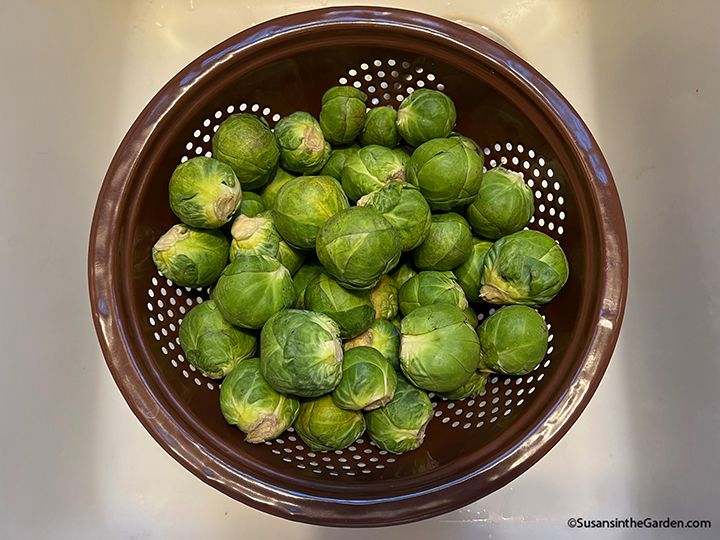How to Grow Brussels Sprouts
Can I tell you a secret? I’ve never been able to grow Brussels sprouts in our Spokane, Wash. garden. I think our summers are just too hot for it. But I’ve done a lot of research into what it takes to get a decent crop, so check it out below!
Latin Name: Brassica oleracea var. gemmifera
Plant Family: Brassica (Brassicaceae)
Cool-season crop
Did You Know?
Brussels sprouts plants look like small trees with miniature cabbages growing from their trunks. Those little cabbages are packed with vitamin K and many other important nutrients. They were first grown in the area now known as Belgium at least as early as the 16th century, but possibly much earlier than that.
Plant Seeds or Seedlings? Start seeds indoors or purchase seedlings at a nursery.
When: Sow seeds indoors 4 to 6 weeks before the average last spring frost date.
Days to Germination: 7 to 10 days
Depth to Sow: 1/4 inch
Spacing: Sow seeds 18 inches apart and space rows 24 inches apart.
Days to Maturity: Ranges from 65 to 200 days, depending on the cultivar.
Cultural Information:
Brussels sprouts plants require a lot of nutrients in order to grow successfully. At planting time, add an organic fertilizer that is particularly high in phosphorus and potassium to the soil. Be sure to follow the package directions.
Cover planting immediately with floating row cover or agricultural insect netting to act as a barrier against aphids and cabbage butterflies. Since the plants do not need to be pollinated, the cover can be left in place for the entire season. Water plants regularly. One month prior to fall frosts, snip off the central growth tip of each plant so it devotes energy to maturing the heads.
Susan’s Picks: ‘Dagan’ (100 days), ‘Hestia’ (90-100 days), ‘Igor’ (200 days), ‘Long Island Improved’ (85 days), ‘Nautic’ (120 days), ‘Rubine’ (red, 85 days), ‘Sylvia’ (100 days)
Potential Insect Problems: Aphids, cabbage worms, slugs, pillbugs
When to Harvest:
Brussels sprouts become sweeter after going through a couple of frosts. Harvest the individual heads while the leaves are still tight. It’s also possible to harvest the entire stalk once the heads have reached their mature size.
How to Cook & Preserve:
The most common way of preparing Brussels sprouts is by steaming them until they are tender. Our favorite way to eat them after steaming is with butter and red wine vinegar. Oven-roasting is a fantastic way to prepare them as well. To freeze Brussels sprouts for later use, blanch the heads in boiling water for 3 minutes. Plunge them into ice-cold water to cool, then drain and place in freezer bags.
My Videos About Growing Brussels Sprouts:
- Organic Insect Control: Aphids, Cabbage Worms & Leafminers
- Organic Insect Control: Flea Beetles, Hornworms, Slugs & Snails
Back to Vegetable Grow Guide Chart
Copyright: Susan Mulvihill, Susan’s in the Garden, SusansintheGarden.com.

